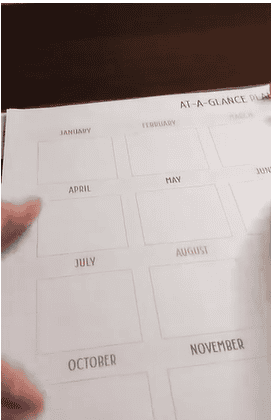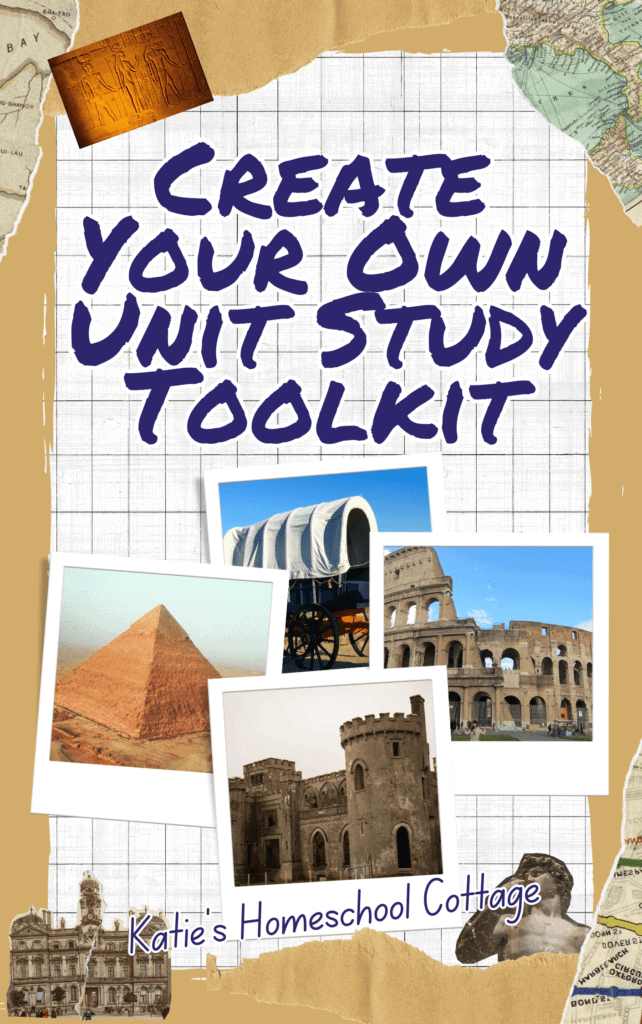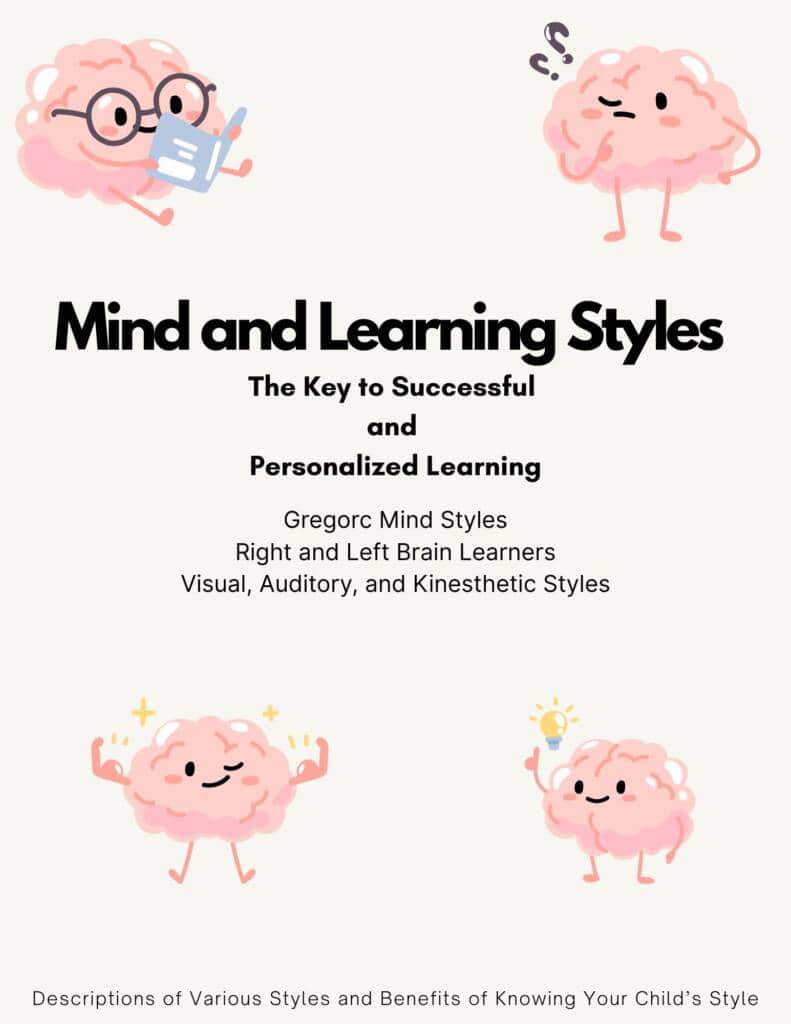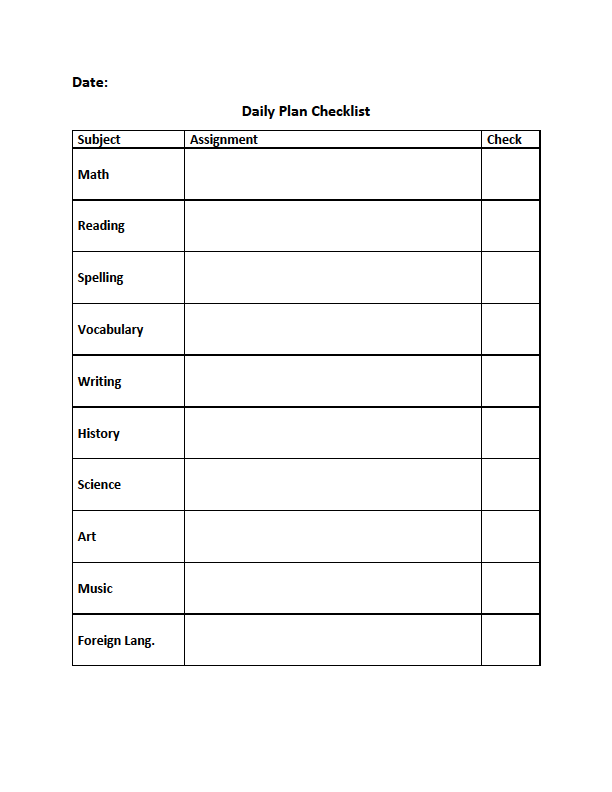As a homeschool parent, it’s understandable you want to find ways to bring less stress in your homeschool days. The new homeschool year begins, many parents are excited, but the school year can bring new challenges, especially as our kiddos get older.
Between preparing lessons, juggling household responsibilities, and managing your children’s varying needs, it’s easy to feel overwhelmed.
However, with the right approach, you can streamline your homeschool routine and make the year both productive and enjoyable for everyone.
We’ll explore five practical and stress-reducing strategies that can help homeschool parents you not only reduce your workload but also make homeschooling more effective and fun.
These strategies focus on combining instruction for multiple children, fostering independence, and establishing routines to set up daily and weekly expectations with some flexibility for “unexpected life happenings”.
# 1 Combine Instruction for Multiple Children Using Unit Studies or Literature-Based Approaches
One of the best ways to reduce stress when homeschooling multiple children is by combining subjects that can be taught together.
By using unit studies or literature based read-alouds, you can engage your children in subjects like history, geography, and science (especially through nature study) all at once, creating a unified learning experience for everyone.
This approach not only saves time but also allows siblings to learn together, making your homeschooling day more efficient and less overwhelming.
How to do it:
- Unit Studies: These are interdisciplinary learning modules that focus on a central theme, such as “Ancient Egypt” or “The Solar System.”
You can design or purchase a unit study that covers history, geography, science, and even language arts, all centered around the same topic.
For example, studying the Middle Ages could include reading historical fiction and age appropriate resource material about given topics in that time period, exploring the geography, arts and culture of the time, and understanding the scientific advances and learning about the scientists during that period.

- Notebooking Pages: Use notebooking pages to help you, not only in promoting and practicing writing skills, but also assisting in guiding and nurturing your unit study, research and notetaking skills, and your child’s retention of what they learn. (Scientific studies show memory retention by physically writing down information – a lost art now adays.)
Here are some great notebooking pages if you are interested in Ancient Times unit studies or any other subject area! - Literature-Based Read-Alouds: Use books that tie together various subjects in a compelling and engaging way.
A great example is reading a historical novel like The Adventures of Tom Sawyer, which ties in history, geography, and language arts.
For younger children, a picture book like The Magic School Bus series can cover science concepts while also sparking curiosity and conversation.
By reading aloud to your children, you can incorporate history, science, and even moral lessons, all through the shared experience of a good story. - Age-Appropriate Activities: Tailor the activities within the unit study or read-aloud to the different ages and developmental stages of your children.
While your older children might be analyzing the history behind the topic in-depth, younger kids can participate through art, crafts, or simple hands-on experiments.
Why this homeschooling style brings less stress in your homeschool days:
Combining subjects not only saves you time but also creates a cohesive learning experience for your children. When they see the connections between history, science, and literature, it encourages a deeper understanding of the world around them. It also gives siblings of different ages the opportunity to learn together, which reduces the stress of planning separate lessons for each child.
# 2 Encourage Independent Work with a Daily Checklist
Encouraging independent work can significantly bring less stress to your homeschool days by allowing you to focus on one child while others work on their tasks.
As a homeschooling parent, it’s important to teach your children to be self-sufficient learners.
One of the best ways to foster independence is by using a daily checklist of assignments.
How to do it:
- Create a Checklist: Develop a simple checklist of tasks for each child to complete on their own. This can include independent reading, math drills, journaling, or exercises from a workbook, especially something they can do independently likely spelling or vocabulary, or handwriting practice. Make sure the tasks are manageable and age-appropriate.
Watch a video for great tips in putting together a lesson planner or notebook of assignment sheets or your child’s work for the year for end of the year evaluation or homeschooling reporting purposes https://www.youtube.com/watch?v=AcnVCVRJKKY
Or look at the planner here – Productive Planner (assorted insides to choose from and dated and undated – you can customize the cover, insides, spines etc. They are so versatile!)

- Use Timers or Schedules: For younger children, set a timer for each independent task so they know how much time they have to complete it. For older children, you might assign tasks to specific times during the day, giving them the responsibility to work through their checklist in an organized way.
- Provide Accountability: Teach your children how to use their checklists as a tool for self-monitoring. They can check off each task as they complete it, providing a sense of accomplishment and encouraging responsibility. You might also establish a quick check-in time at the end of the day to review their work together.
- Build Gradually: Start small with independent tasks, and gradually increase their responsibility as they get older. For younger children, you can set the expectation that they can work independently for a set period of time, such as 15–30 minutes, before needing your assistance.
- Create Busy Boxes for Younger Kiddos: To keep your youngest kiddos occupied while working with older children, you can have busy boxes ready to circulate through the day. Only take them out at certain times of the day and switch out supplies from week to week. Also, allow them to “color” a picture while your older children are writing or during read aloud time.
Some ideas for toddlers would be sensory type manipulatives in storage boxes you can find at the dollar stores. For preschoolers, you can fill boxes with assorted fine motor skill or sorting activities to keep them busy such as play scissors with assorted cutting exercise sheets or play doh, or tracing and coloring worksheets. Sorting activities can include using a muffin pan to sort objects from dollar store according sizes, shapes, colors, types. Measuring activities can include practice using measuring cups and filling and emptying them out into a bin with rice, cereal, cotton balls or other items found at the dollar stores.
Why Independent Activities Bring Less Stress to your Homeschool Days
A daily checklist teaches children important life skills like time management, organization, and responsibility.
It also creates a routine where they know exactly what is expected of them, which reduces confusion and frustration.
For parents, it provides a chance to work one-on-one with other children, giving each child the attention they need while still keeping the day flowing smoothly.
It may take some time to establish this routine and expectation, but it is well worth it and will help everyone enjoy their homeschooling time together.
# 3 Establish a Flexible Yet Structured Routine
One of the best ways to reduce stress in your homeschooling days as a homeschool parent is by creating a structured yet flexible daily routine.
Structure helps everyone know what to expect, while flexibility allows you to make adjustments as needed without feeling overwhelmed.
This can be the hardest balance to achieve because parents can start out expecting too much of themselves and their kiddos. Finding a balance is the most effective routine.
How to Establish a Structured but Flexible Routine and Homeschool Schedule
- Morning Routine: Start your day with a predictable routine. This might include a morning meeting where you outline the day’s goals, a short prayer, or a group discussion about the lesson. Even if you’re teaching a multi-age group, you can discuss the main topics that will be covered during the day.
- Work Blocks: Organize your day into work blocks (approximate time periods) , where you focus on a specific subject or activity. We used “work blocks” instead of specific time periods because it just added stress to keep our schedule exactly on time, especially if we had a slow morning getting out of bed, breakfast takes longer, or morning tasks such as hygiene or washing breakfast dishes takes longer than expected.
For example, you might dedicate the first block to unit studies or literature, the second to independent math work, and the third to a hands-on science experiment or geography project.
Our morning work blocks usually focused on core subject areas like math or language arts such as reading instruction, grammar, spelling, vocabulary, handwriting, or writing practice. I would have one on one time with one child in math or reading instruction while the other completed independent tasks such as a math drill review, spelling, vocabulary, or handwriting practice. Then I would switch out a couple of times.
We would end our morning block with a family read aloud of a book that corresponded with a historical time period we were all studying together and they would narrate to me what they remembered from the reading and then write it down to practice their writing skills. (This also set us up for our history and geography lesson for later in the day.) - Built-In Breaks: Allow for regular breaks throughout the day—especially when working with younger children. These can be simple activities like stretching, snack time, or playing outside. Breaks help reset focus and allow everyone to stay energized.
We would build in quick movement or restroom breaks between tasks depending on their ages with a longer 30 min. outside break before finishing our last work block before lunch.
After lunch, we would have another 30 minute outside play time, then an hour long quiet time on our beds (either napping, or reading, or listening to a read aloud on a cassette/cd player). This was part of mom’s self care time (mentioned below). - End-of-Day Routine: Have a consistent end-of-day routine to bring closure to your homeschooling day. This might include a quick recap of what was learned, a time for questions, or some free playtime.
Our end of day routine was our last work block together after our quiet time. This work block was an activity that included projects, art, or crafts pertaining to our time period we were studying, science experiments for our science topic, or a nature hike or quick field trip.
Why This Flexible Routine Brings Less Stress to Your Homeschool
A routine helps reduce stress by providing predictability.
Both you and your children know what to expect, which helps everyone stay focused and productive.
Flexibility allows you to adjust on the fly when things don’t go according to plan, whether that’s due to a sick day or an unexpected interest in a particular topic.
One of the biggest helps I learned is not dating my lesson plans. If our day or week went off the rails, my dated lesson plans were no longer accurate and confusing. I started marking each day’s lesson plans according to what number day of the school year we were working on. For example, our school district required 180 days of instruction, so I marked each day, Day One, Day Two, Day Three, etc., including field trip days, co-op days etc.
# 4 Outsource for Less Stress in your Homeschool Days
Homeschooling doesn’t mean you have to do everything on your own. Outsourcing certain subjects or tasks can help reduce stress and provide your children with expertise and enrichment outside of your immediate skill set.
And yes, if you use outside resources to assist you in providing a homeschool education for your kiddos, it is still considered homeschooling, unless you enroll them full time in a program provided by the public education system or a private institution 5 days per week. (There are homeschool hybrid programs out there with private schools or co-ops where they attend classes 2-3 times per week, but their education is the parent’s responsibility.)
How to Use Outside Resources:
- Hiring Tutors or Instructors: If you’re not confident in teaching certain subjects (like advanced math or foreign languages), consider hiring a tutor or enrolling your child in an online class. This can alleviate pressure and provide your children with the specialized instruction they need.
One of my kiddos wanted to take Arabic as a foreign language, which he was able to do with Brigham Young University and their high school online program. He was fluent enough when entering college, the department head told him he could skip the first year of college classes and begin with the intermediate classes if he wished. - Homeschool Co-ops and Classes: Consider joining a homeschool co-op. Many co-ops offer subjects like music, physical education, and art, which can give you a break from planning every subject yourself. These groups can also provide a community of support and encouragement.
This is also a great option for science classes with experiments, especially for the high school grades!
My guys were able to take advantage of physical education classes at the YMCA, homeschool karate and music classes, and art and cooking classes. - Virtual Classes and Programs: There are many online programs that can enrich your child’s education. Websites like Outschool, Khan Academy, or even local community centers offer live classes that you can use to supplement your curriculum. Again, as long as the program is not a full time program and that program takes full responsibility for the grades, transcripts, instruction, etc, you are still homeschooling.
One of my kiddos took a Pre-Calculus class for his senior year math class at the local community college with their high school/college dual enrollment program. He earned his high school math credit and college credit at the same time and was ready for the next level math course upon his entrance into his college program.
You will want to make sure to check the laws for your state if there is a maximum number of hours allowed for outside instruction in your homeschool.
Why Outsourcing Brings Less Stress to Your Homeschool Days
Outsourcing allows you to focus on your strengths and prevents you from feeling like you need to be an expert in everything.
It also ensures your children get exposure to a broader range of educational experiences, which can be motivating and enriching.
Plus, it reduces the mental load on you as a parent and provides a break when you need it most.
# 5 Prioritize Self-Care and Family Time
Finally, one of the most important ways to reduce stress is by taking care of yourself and spending quality time with your family.
Homeschooling can be intense, so it’s essential to find balance and make time for relaxation and fun.
It took me until about our third year to really find that balance and our groove that worked for all of us. The first year I was too structured and worried about keeping a schedule and getting stressed out when we didn’t meet my high expectations of what we “should have” accomplished each day. No fun for anyone and we were all just stressed out.
The next year was an experimental year of using different curriculum and different routines to see what worked and what didn’t.
The third year was just right and each year after became more and more about enjoying our homeschool journey and time together as they were getting older. And what a ball we had!
How to Schedule in Time for Self Care and Family Time
- Schedule Self-Care: Set aside time each week for yourself. Whether it’s taking a walk, reading a book, or enjoying a cup of tea in peace, self-care is crucial to avoid burnout. Even 20 minutes a day can make a big difference.
Remember that “quiet hour” I mentioned earlier as part of our daily routine? It gave all of us downtime and a bit of a break from each other and a chance for each of us to just decompress. When my guys were little they would fall asleep eventually and have a nap, and as they got older our quiet time was just required “time on the bed”, whether they were reading or listening to something.
This was my time to grab a quick nap or read and have some time to myself.
My husband traveled quite frequently at that time and I was the scout mom, driver to baseball, co-op teacher, and helper of my husband’s business as well as full time homeschool mom so that one hour each day was precious to me to keep my sanity. - Delegate Responsibilities: Share household tasks with your children, based on their ages and abilities. This not only helps reduce your workload but also teaches your children responsibility and life skills.
Laundry folding and putting clothes away was a family activity. While I and another kiddo would fold, I would be quizzing another kiddo on spelling or vocabulary words or math facts. The other kiddo would jump in and put clothes away while I quizzed the other one.
My guys loved to vacuum. So, before Friday night movie and pizza night, it was vacuuming time. Did they do a meticulous job I would have loved? No, but it was good enough until I did a more thorough job.
Toys were picked up once per day after bath time and before bedtime books (which they loved) every night. An incentive helps.
Another incentive was picking a prize from the dollar store every Friday afternoon before we visited Blockbuster to get our movie and then our pizza. This prize was for good attitude and effort for school stuff and contributing positively to our home and family. This also was a big treat to look forward to on Fridays and was a great incentive. - Plan Family Fun Days: Make time for family outings or activities that aren’t school-related.
Go on a nature hike, have a movie night, or do a craft together.
These moments of connection help maintain a healthy family dynamic and give everyone something to look forward to.
Fridays were either co-op days or field trips. On some days when we needed a break from school, we would just call it a “family outing day” and take the day off together just for fun! - Get Enough Sleep: Don’t sacrifice your sleep. It’s tempting to stay up late to prepare lessons or catch up on work, but being well-rested makes you more productive and patient.
Remember, I said my husband was traveling and I was scout, sport, and co-op mom? The one thing I made sure to do was go to bed and get my 8 hours. If I had to do lesson plans during the summer while the kids played outside, that’s what I did. I also completed business stuff for my husband while watching my kids play in the yard as well!
Some Saturdays to finish up business paperwork, especially tax season, I hired a sitter in the neighborhood to watch my kiddos while I worked in my office.
The same goes for your kiddos. I adjusted our school day start time according to their sleeping patterns, especially as they headed into middle and high school. Everyone’s day was better for it!
Why Self Care and Family Contributes to Less in your Homeschool Days
Taking care of yourself ensures you have the physical and emotional energy to support your children.
It also models healthy habits for your kids and reinforces the importance of balance in life.
Family time helps build a strong connection, making homeschooling not just a job but a shared journey.
My guys talk about what wonderful memories they have from our homeschooling time together. Our time together included schooling (they graduated with honors from college), but more importantly it became more about building a close family unit that demonstrated our values and faith and making the most of our time together.
You’ve Got This!
Homeschooling doesn’t have to be stressful, and with the right strategies in place, it can be an incredibly rewarding experience.
By combining instruction for multiple children through unit studies or literature-based approaches, fostering independence with checklists, establishing a flexible routine, outsourcing when necessary, and prioritizing self-care, you can create a homeschool environment that is organized, engaging, and, most importantly, sustainable.
Remember, you don’t have to do it all perfectly—you just have to take it one day at a time.
Trust your instincts, adapt as you go, and cherish the unique opportunity you have to learn and grow alongside your children.
And most importantly, just enjoy the time you have together!










